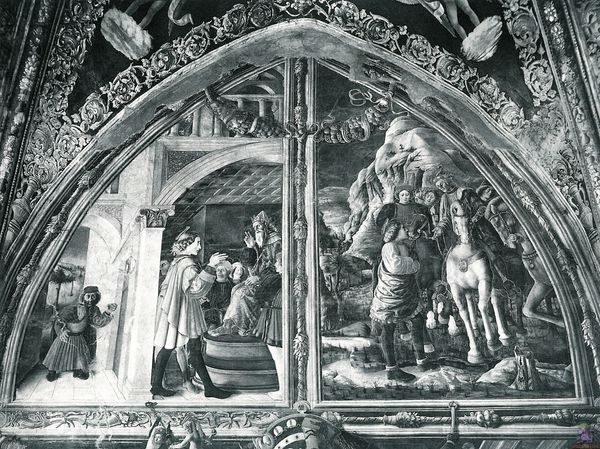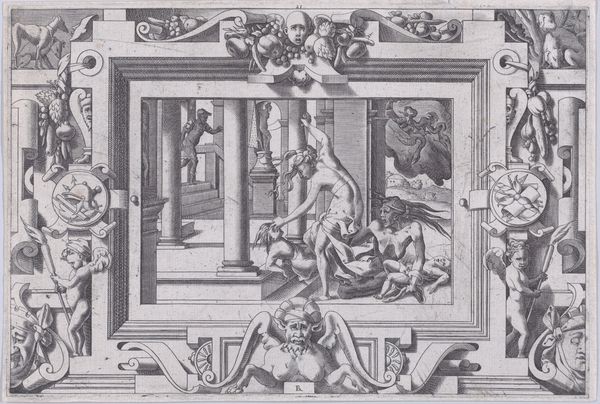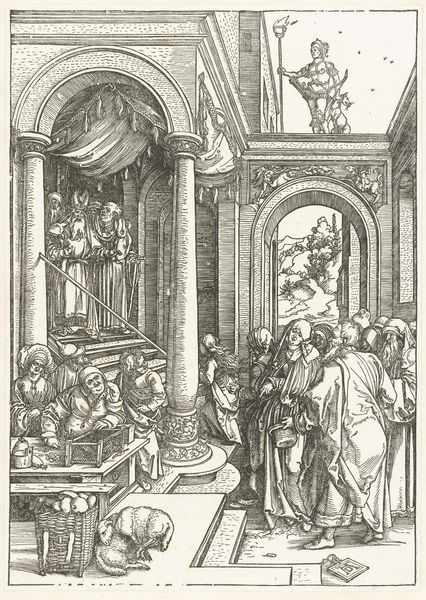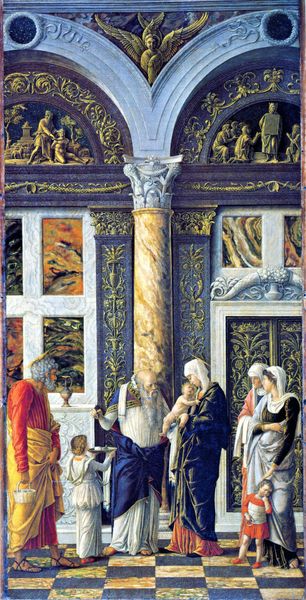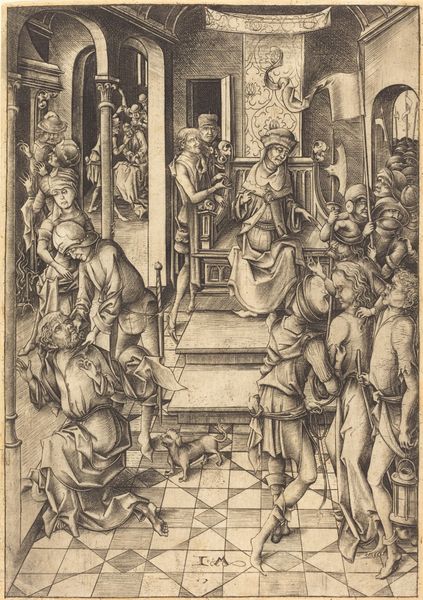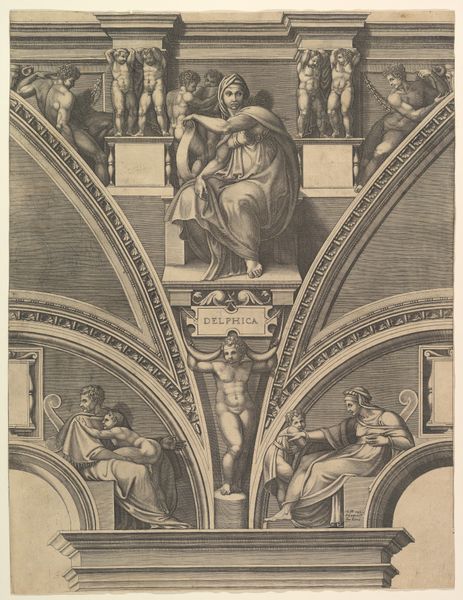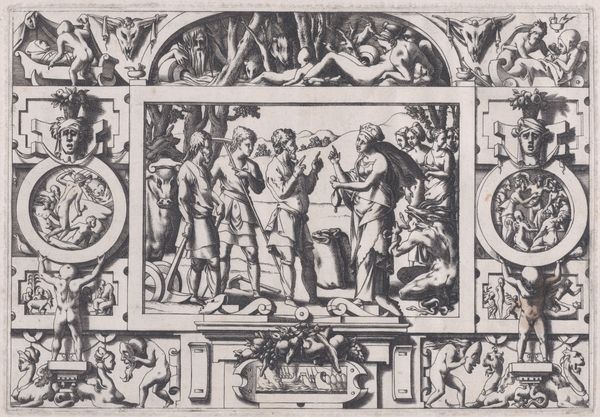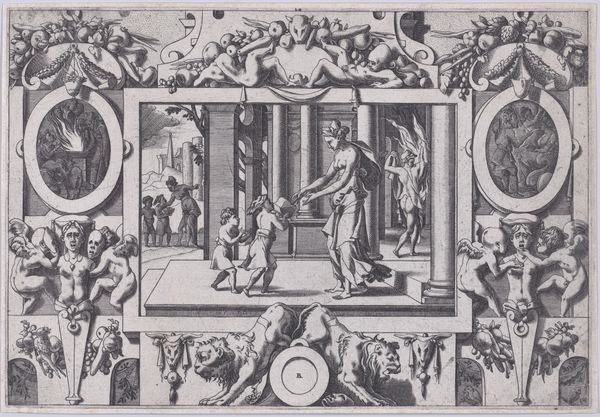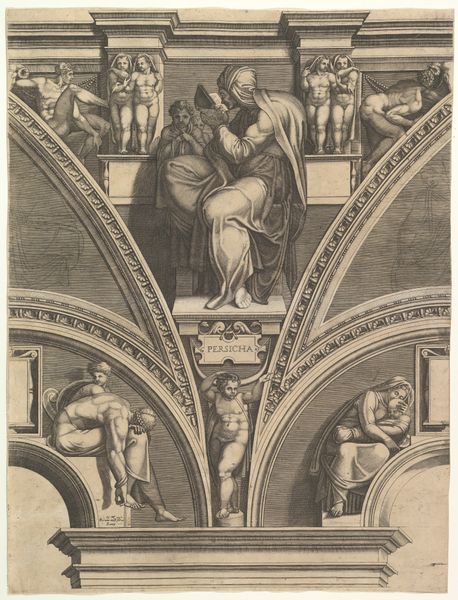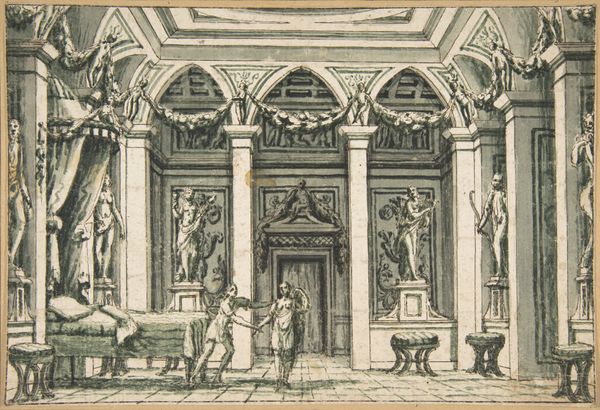
Design for the facade decoration of the dance house in Basel 1520
0:00
0:00
hansholbeintheyounger
Kunstmuseum Basel, Basel, Switzerland
drawing, architecture
#
drawing
#
figuration
#
11_renaissance
#
arch
#
cityscape
#
history-painting
#
northern-renaissance
#
architecture
Copyright: Public domain
Editor: Here we have Hans Holbein the Younger’s "Design for the facade decoration of the dance house in Basel," created around 1520. It's a drawing detailing an architectural design. What immediately grabs me is the layering – it's both flat and incredibly detailed at the same time. What do you make of this design, focusing on the materials and how it was constructed? Curator: For me, this drawing highlights the intriguing intersection of art, labor, and societal function in the Renaissance. Holbein wasn't just producing a piece for aesthetic contemplation, but rather designing something for use – a façade, an architectural intervention for a dance house. The means of production here are really interesting. What materials would be used to actually build this, considering the intricate details he illustrates on the page? Editor: So you’re saying this drawing isn't just an image, it’s a blueprint for something made using stone, paint and maybe even wood carvings? It gives the drawing so much more weight if someone was literally going to use it! Curator: Precisely. The materiality is embedded in the purpose. The planned façade becomes a medium itself. Holbein's design reflects the social function of the dance house and Basel at that moment. This relates to labor. Consider the stone masons, the carpenters, the painters. Did Holbein expect it to be realized exactly according to his specifications? Was this for the owner or patrons? Editor: That changes everything. The level of skill necessary to translate this drawing into a three-dimensional space seems massive! This makes me reconsider who the "artist" truly is here. Holbein drafts it but others will make it. Curator: Exactly! It challenges the traditional boundaries between "high art" – Holbein's design – and the more ‘humble’ crafts required for its realization. What if there were constraints such as time, costs, or even expertise to create such an elaborate façade, then it shows how even a design might reveal production limitations of the period. What does this design "consume," culturally? Editor: Thinking about that consumption, I now realize the architecture of Basel itself would shift! If this design was fully materialized, this facade might influence the designs of nearby buildings too. It is not just consuming raw materials and specialized labor. This piece truly reveals production limitations, too, because, to your earlier point, it appears it was never even built! Thanks! Curator: It invites one to consider art beyond mere aesthetics and view the socio-economic framework of labor and the processes of making. Thank you.
Comments
No comments
Be the first to comment and join the conversation on the ultimate creative platform.
